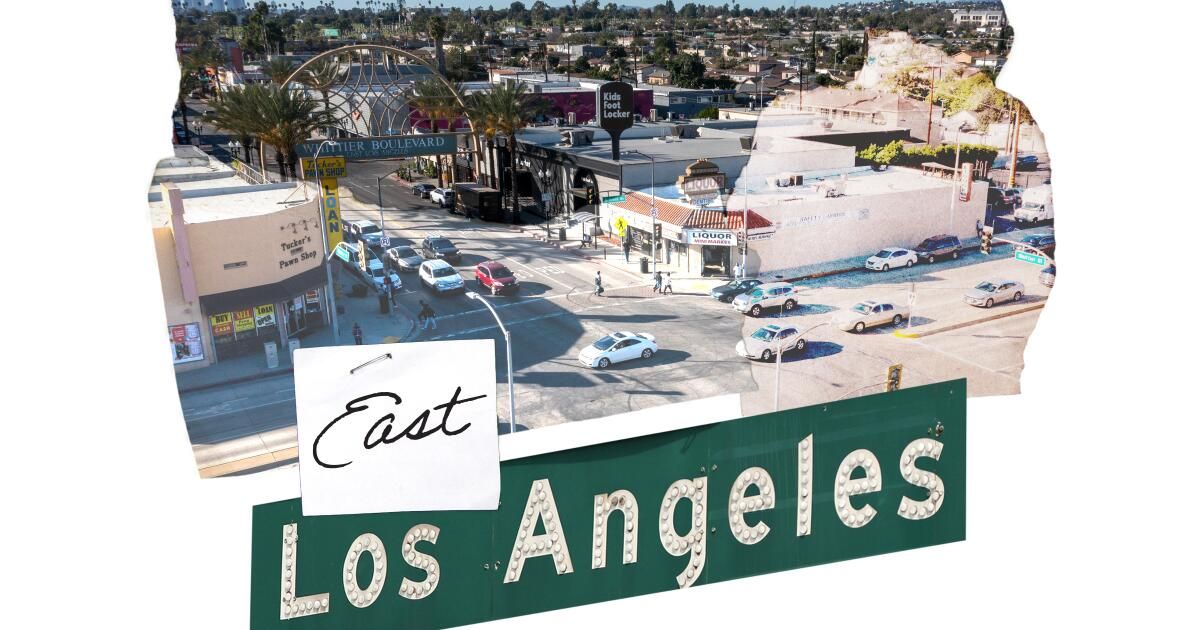The introduction of Assembly Bill 2986 in Sacramento has reopened the perennial question of city status for East Los Angeles and sparked a fight over how to consider the issue in 2024. Nearly 120,000 people live in East Los Angeles. Angeles, the most populous unincorporated community in Los Angeles County. . It is feasible? What is fair? We asked East Los Angeles State Assembly Rep. Wendy Carrillo, who introduced the bill in Sacramento, and East Los Angeles County Supervisor Hilda Solis for their responses.
East LA deserves a responsible and independent evaluation
By Wendy Carrillo
Residents of East Los Angeles, a historic community, have spent decades fighting for justice. Most Angelenos Know The strikes of 1968 demanding better schools and the massive campaign of 1970 Chicano moratorium March against the Vietnam War. Few people know about the decades-long battle for self-determination that residents of East Los Angeles have been waging.
Earlier this year, in Sacramento, I presented Assembly Bill 2986It would require the Local Agency Formation Commission for Los Angeles County, known as LAFCO, to create a task force to study how East Los Angeles tax revenues are used and review whether the community should be incorporated as a city or become a “special district,” which could include an elected oversight board. The nearly 120,000 residents of this community, most of whom are Latino, need and deserve a stronger civic voice.
Despite being the largest unincorporated area in Los Angeles County, East Los Angeles lacks a formal government structure. It is bordered by Monterey Park, Commerce, Montebello, Maywood, Vernon, and Los Angeles itself—all cities with mayors and city councils elected to carry out the wishes of local residents, develop economic strategies, and oversee public services. In the city of Los Angeles, residents can also make their voices heard on neighborhood councils.
In East Los Angeles, residents have only county representation: a supervisor whose district includes two million people. That type of governance is neither local enough nor transparent enough.
In 2012, LAFCO, using a financial study conducted during the 2008-09 recession, denied East Los Angeles’ incorporation efforts. The reason was that the community’s tax base could not support city status. By many accounts, then-County Supervisor Gloria Molina, whose district encompassed East Los Angeles, instead promised to deliver an annual financial report detailing the community’s tax collections and expenditures. An East Los Angeles Advisory Committee comprised of local leaders was established. Unfortunately, the financial reports never materialized and the committee was dismantled.
Now is the time to re-examine the issue of East LA's status, and that's exactly what AB 2986 would do. I crafted the bill working with hundreds of East LA tenants and homeowners, business owners, principals from nonprofit organizations and community leaders. My bill does not require city status. However, the task force and feasibility study seek to empower East LA residents to have an effective and permanent voice in their community.
The opposition to the bill — from the Board of Supervisors, some labor groups, people who don’t live in East Los Angeles, and even the Los Angeles County Democratic Party — underscores East Los Angeles’ David-versus-Goliath position in the county. Supporters of AB 2986 simply want a responsible task force and an independent feasibility study, not an analysis by a group hand-picked by the county, which, after all, has let them down in the past.
It shouldn't take a state bill to make Los Angeles County answerable to the people it governs, but in fact, AB 2986 is necessary to even the odds between East Los Angeles and the county. The state can afford to help this community.
The real issue is not the city, but a permanent form of representation for East Los Angeles. With AB 2986, we can defend and deliver for East Los Angeles. And we should do it.
Wendy Carrillo represents the 52nd State Assembly District, which includes East Los Angeles.

East LA should extend its long alliance with the county
Band Hilda L. Solis
There's no way to sugarcoat it. Decades of history and reams of hard data from multiple analyzes have repeatedly come to the same conclusion: East Los Angeles simply does not generate enough tax revenue to make incorporation economically viable.
Four previous studies have shown that incorporation would immediately force East Los Angeles residents and businesses to pay higher taxes, cut vital community programs including public safety, fire, library and housing services, and lead to the outsourcing of services to private, likely non-union contractors.
The latest analysis carried out by California in 2012 showed that if incorporated, East Los Angeles would have a budget deficit of $19 million in the first year alone. That deficit would be significantly larger today, given that utility costs have risen since then.
These are the harsh economic realities of incorporation: Individuals, businesses and union members in East Los Angeles will bear the brunt of the costs.
That is why the Los Angeles County Board of Supervisors; the county executive's office, which is responsible for overseeing the fiscal health of Los Angeles County; he Local Agency Formation Commissionthat supervises the feasibility of the incorporation; Dozens of businesses and community organizations, as well as more than 2,100 residents who have signed an opposition petition, have lined up against Assembly Bill 2986. The bill calls for another task force and another detailed feasibility study, a two-year process that would cost nearly $6 million, according to county estimates.
The County has been a trusted economic partner to East Los Angeles for decades. I have spent the last 23 years advocating for the people and businesses there, helping those in need, and opening doors that have been closed for too long to too many people.
Over the past decade, the county has invested more than $500 million in East Los Angeles to help fund community services and infrastructure projects, including affordable multifamily housing, rent relief, park and street improvements, and small business support , seniors and low-income residents. . This is in addition to the nearly $103 million the county invests annually in municipal services such as the Department of Public Works, Parks and Recreation, the Sheriff's Department and animal control.
East Los Angeles is a tremendously proud community, and rightly so. They want accountability, transparency, and a seat at the table. I couldn't agree more.
Last month, the Board of Supervisors ordered each county department to conduct a year-over-year analysis to account for every dollar allocated to East Los Angeles. This must be completed within 120 days and we will share each item with the people of East Los Angeles.
We are also working to form a city council or city advisory committee to give residents a platform dedicated to advising the county on issues related to East Los Angeles.
Extending East Los Angeles’ decades-long partnership with the county and finding new ways to work together is a better path forward than another cityhood study.
Incorporation would be a bad deal for East Los Angeles. With California facing a historic budget deficit, the last thing taxpayers need is to waste money on another study that will give us information we already know.
Hilda L. Solis is a Los Angeles County supervisor whose first district includes East Los Angeles.












